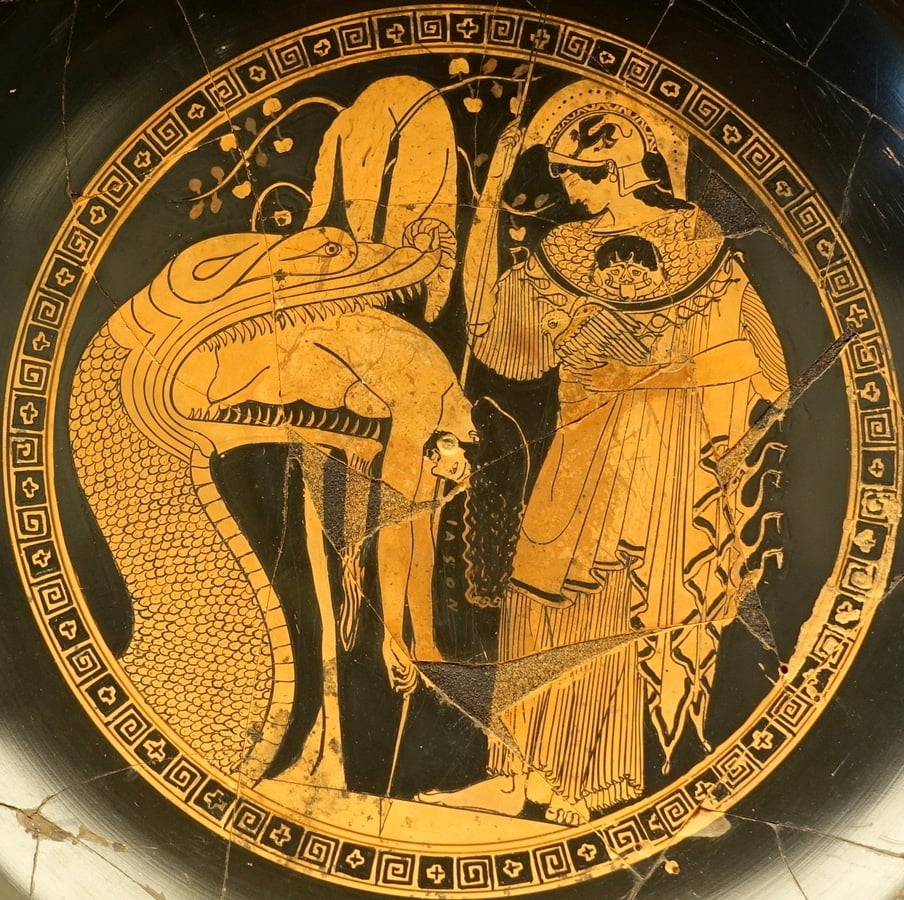

Dragons appear prominently in several stories from Greek mythology. In fact, they appear prominently in mythologies all over the world. Why did so many unrelated cultures have such a similar concept of a mythical beast? Could some of the dragons in Greek mythology and the mythologies of other cultures have been based on real animals?
A big mystery involving dragons is why they appear in the mythologies of ancient cultures worldwide. For example, the Greeks, Chinese, Egyptians, Celts, Aztecs, and many others all had stories of dragons.
How could all these ancient cultures, so far removed from each other, create stories about the same mythical creature? From this evidence, some researchers have concluded that they must have originated from some source available to these disparate cultures, such as dinosaur bones.
However, rather than being based on fossils, could it be that the dragons of the Greeks and other nations were actually based on real animals?
Dragons appear in Greek mythology right from the earliest sources. We find one example in Theogony, written by Hesiod in the seventh century BCE. There, Hesiod refers to Ladon, the giant serpentine offspring of the mythological figures Ceto and Phorcys.
Another dragon appears in the legend of Jason and the Argonauts. At the end of their quest to find the Golden Fleece, Jason and his companions find it guarded by a giant serpentine dragon.
The Hydra is another famous dragon from Greek mythology. This was the multi-headed serpentine monster slain by Heracles as one of his twelve labours. Similarly, the hero Cadmus was said to have slain a dragon at the Ismenian spring. Unlike the Hydra, this serpentine monster only had one head.
However, dragons were not always evil monsters. Medea, the princess of Colchis, was the granddaughter of Helios, the sun god. As a gift, Helios gave her a chariot pulled by winged dragons.

When we examine these dragons in Greek mythology more closely, the answer to this mystery becomes quite apparent. Take, for instance, the dragon known as Ladon. He was the dragon who guarded the special apples in the Garden of the Hesperides.
Yet he is just a snake when described and depicted on ancient pottery and mosaics. He is a powerful offspring of mythological figures, but his form is nothing special.
He was just a snake – sometimes exaggerated in size or strength, but still fundamentally a snake. One source gives him 100 heads, but this does not change what Ladon was fundamentally believed to have been.
Similarly, the dragon that guarded the Golden Fleece was a giant serpent. Again, artwork on ancient pottery helps us to discern this. Since this legend is part of Greek mythology, it is no wonder that its proportions are exaggerated. Nevertheless, it is still based directly on real-world serpents, like Ladon.
Some scholars believe that the people of ancient Colchis used snakes to guard their temples. This likely conclusion makes the origin of this dragon in Greek mythology even clearer.
The fact that dragons in Greek mythology are mostly exaggerated serpents is also evident from the word itself, which has proven remarkably stable over the centuries. The English word ‘dragon’ originates from the very similar Ancient Greek word ‘drakōn’, simply denoting a large serpent.
The ancient Greeks were perfectly capable of exaggerating the proportions and abilities of snakes for the sake of a mythological story, just as they did for other real-world animals. Nevertheless, there is evidence that some of their stories of dragons may have been adapted from Near Eastern mythologies.
For example, a particularly unusual dragon was Typhon. He was a giant with the lower half of a serpent and one hundred serpent heads emerging from his shoulders. He famously fought against Zeus and temporarily defeated him.
The origin of this myth may lie with Near Eastern mythologies, such as the story of Osiris and his battle against Set (eventually equated with the giant serpent Apophis), or the myth of Baal Hadad and his fight against Lotan, a serpent monster.
Even in these cases, the evidence shows that these ‘dragons’ were nothing more than exaggerated, mythologized depictions of serpents.
